Our favourite places to stay on this sleepy Cebu island.
The Disaster That Buried a Village: Remembering Guinsaugon
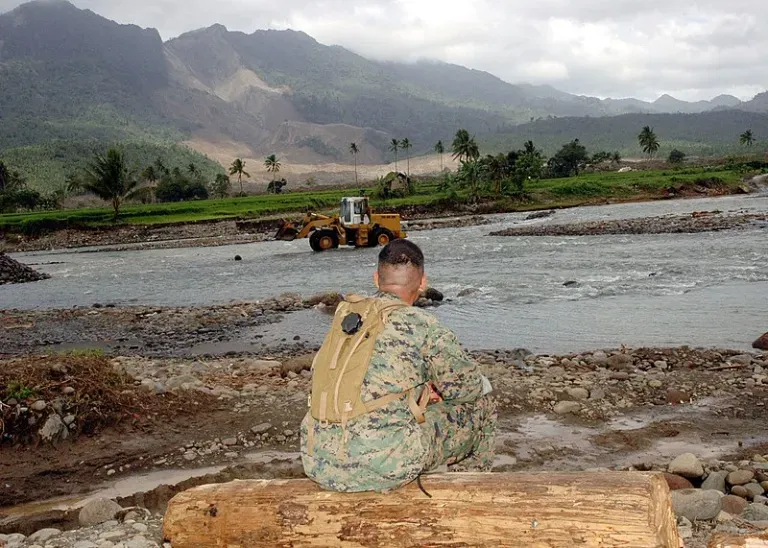
On February 17, 2006, the quiet village of Guinsaugon in Saint Bernard, Southern Leyte, was swallowed by one of the deadliest landslides the Philippines has ever seen. After weeks of non-stop rain, a mountainside collapsed, burying homes, schools, and lives in a matter of moments. It was an unimaginable tragedy that left behind grief and devastation. Now, 19 years later, we have to ask: Have we learned enough to make sure this doesn’t happen again?
Also read: Avenida Rizal: A Walk Through Manila’s Forgotten Glory
A village erased overnight

Image credit: Brian P. Biller | Wikimedia commons
The landslide didn’t just happen out of nowhere. Heavy rains had soaked the mountains for weeks, weakening the soil. An early-morning earthquake (magnitude 2.6) might have been the final nudge, but experts also pointed to the role of deforestation. With fewer trees to anchor the soil, the mountainside simply gave way. Guinsaugon, which had once been a small but thriving community, was gone in the blink of an eye. Lives, homes, and memories were buried beneath tons of mud and debris.
Could this happen again?
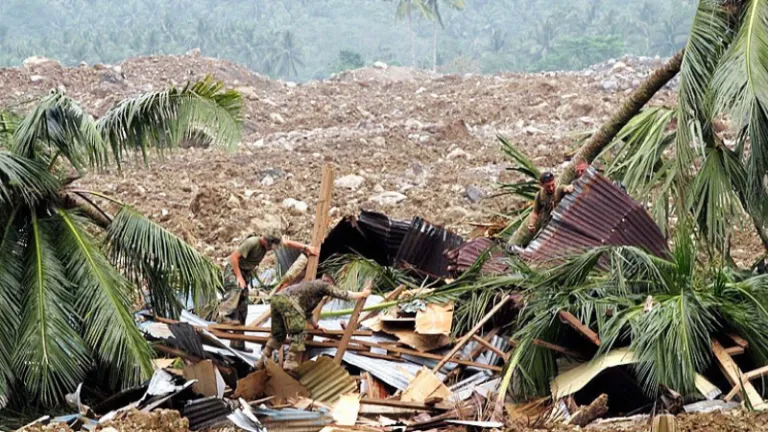
Image credit: Brian P. Biller | Wikimedia commons
The Philippines is no stranger to natural disasters. Its location along the Pacific Ring of Fire and in the path of tropical storms makes it highly vulnerable to earthquakes, typhoons, and landslides. With climate change making storms more intense and deforestation still an issue in many rural areas, the risks of another tragedy like Guinsaugon are real. Just recently, parts of Mindanao were hit by severe flooding and landslides, displacing thousands of families. The event serves as a stark reminder of the fragile state of many communities in the country.
But here’s the real question: Are we doing enough to get ready for the next disaster?
Lessons we shouldn’t forget
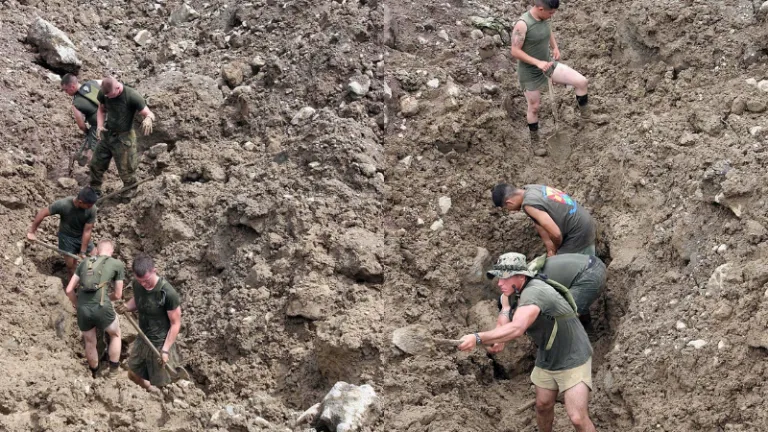
Image credit: Cpl. Justin Park | Wikimedia commons
Protect our forests – Deforestation has long been a major contributor to landslides. With fewer trees to hold the soil together, mountainsides become more prone to collapse. We need more tree-planting programs and stricter enforcement of logging laws to safeguard our environment.
Early warning systems save lives – In 2006, there were warning signs, with soil movements detected in the days leading up to the disaster. While we have much better technology now, many communities still lack the awareness and tools to act on early warnings. Stronger disaster preparedness and early warning systems could save lives in the future.
Safer settlements matter – Many Filipinos still live in landslide-prone areas, and urban planning often fails to account for this risk. Relocating people from high-risk zones and improving infrastructure in vulnerable areas are crucial steps in minimizing the impact of future disasters.
International rescue efforts
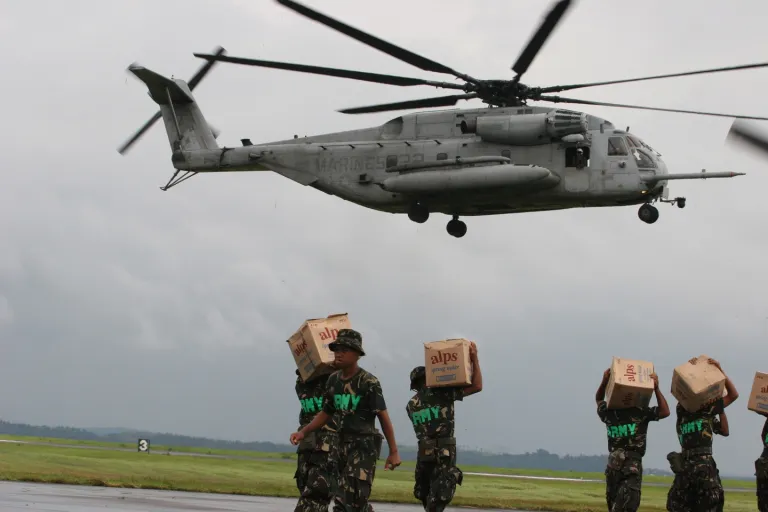
Image credit: Philippe E. Chasse | Wikimedia commons
When disaster struck, the world came together to help. Rescue teams from the United States, Japan, Malaysia, Singapore, Taiwan, and several other countries rushed to Guinsaugon to assist with search and recovery operations. Specialized equipment, emergency medical supplies, and aid materials were sent to help the survivors and bring attention to the disaster. These international efforts, alongside local responders, helped uncover survivors and provide much-needed relief, showing the importance of global solidarity in the face of tragedy.
Learning from disaster
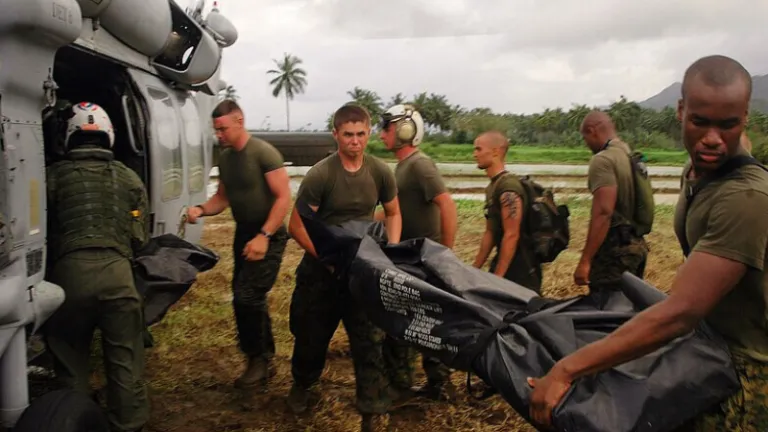
Image credit: Michael D. Kennedy | Wikimedia commons
For travellers exploring the Philippines, Guinsaugon serves as a reminder of the power of nature and how vulnerable even the most beautiful destinations can be. From the mountain trails of Leyte to the coastal towns of Mindanao, many areas are prone to landslides and other natural disasters. If you love adventure, it’s essential to learn how local communities prepare for such events. You can also support eco-tourism initiatives that promote environmental sustainability and help raise awareness about the importance of disaster preparedness. Staying informed about weather conditions before your travels and following safety advice can also help reduce risks during your trip.
Also read: Discover Southern Leyte: An Underrated Treasure in the Philippines
Remembering Guinsaugon
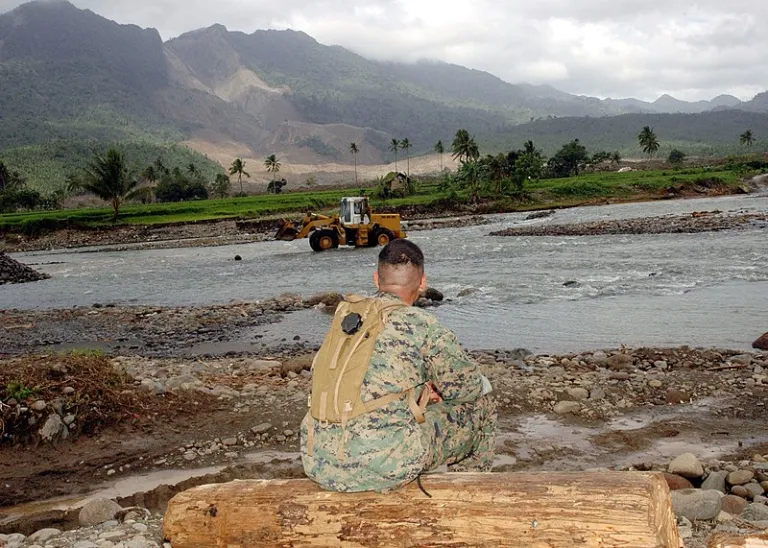
Image credit: Marvin E. Thompson Jr. | Wikimedia commons
Every February, survivors, families of the victims, and residents of Saint Bernard gather to remember what was lost that fateful day. It’s a tough reminder of nature’s power, but also a call to learn from the past. While we can’t change what happened in 2006, we can honor the memory of those lost by ensuring we’re better prepared for the future.
So, as we reflect on the lessons from Guinsaugon, the question remains: Are we ready to protect the future, or will we continue to wait for tragedy to spark real change?
Published at
About Author
Jeliefer Sumaya
Subscribe our Newsletter
Get our weekly tips and travel news!
Recommended Articles
10 Bantayan Island Resorts, Hotels, and Rentals for Your Tropical Escape 14 Best Credit Cards for Travel in the Philippines The only plastic we need for travel.
10 Best Mountain Cafes in the Philippines for Your Peak Coffee Experience Coffee date on the mountains, anyone?
10 Family Outing Ideas in Metro Manila Under ₱500 Looking for a weekend bonding with the family under ₱500? Head to these places, pronto!
10 Fun Things to Do in Manila Alone Live your best life in Manila, even when you’re riding solo.
Latest Articles
10 Easy Day Tours Near Manila for a Quick Break Escape the city with these fun and easy day trips near Manila.
4 Ultimate Crowd Safety Tips Every Filipino Traveller Should Know Enjoy big events worry-free with these tips!
President Marcos Recognises 3 Pinoys Who Visited All 193 UN Countries Filipinos honoured after visiting 193 countries
10 European-Inspired Destinations in the Philippines You Should Visit Experience the charm of Europe right here in the Philippines!
Island Hopping Adventures You Must Try in Cebu Top island hopping spots and tips

